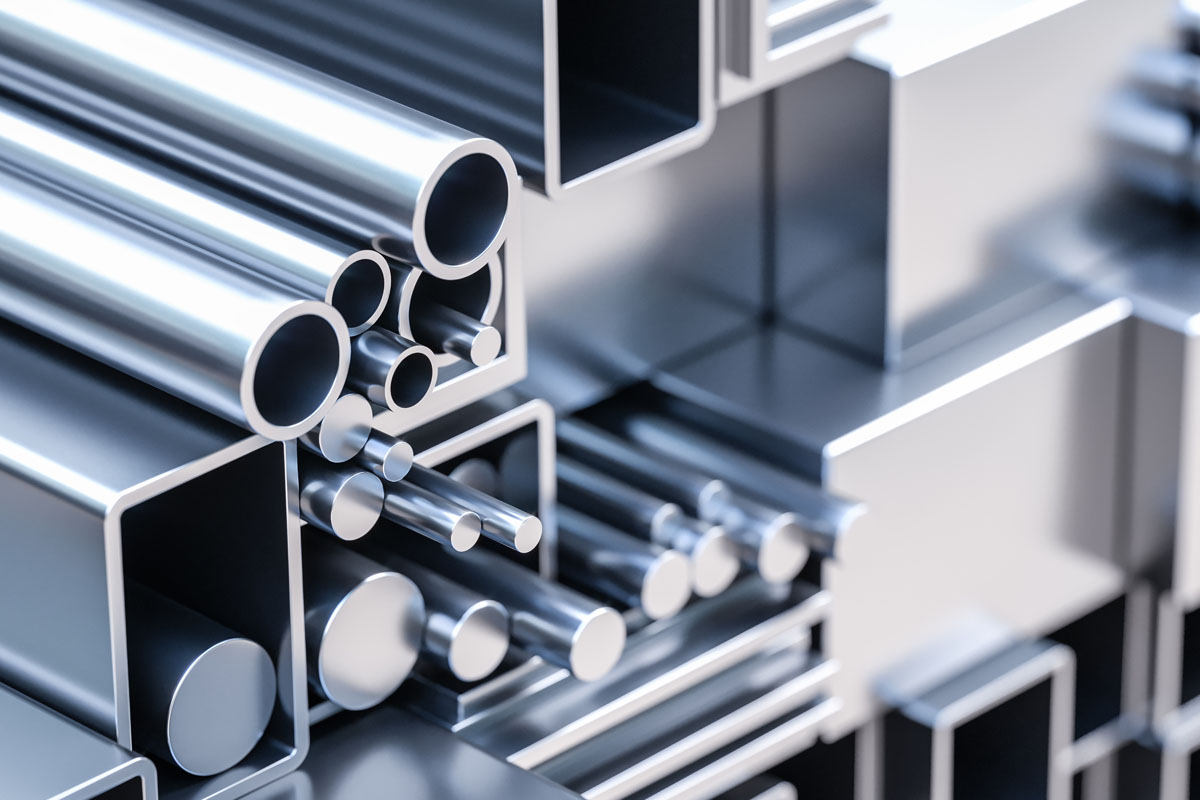Aluminum
What Is the Difference Between Aluminum and Aluminium?
Aluminum, or aluminium, is the most abundant element in the earth’s crust making about 8% of the surface. Aluminum is used for many things like wrapping your food before you put it on the grill, as an accent feature in your retro kitchen, as a railing on your boat, and even as a leveling product for walls and ceilings. Where you are on the earth may dictate the way you spell the name. But why are there two spellings for aluminum, and what’s the difference between them?
Changing the Name of Aluminum
The two spellings (aluminum vs. aluminium) can be attributed to the chemist who discovered and named the aluminum metal, Sir Humphry Davy. It was back in 1807 when the English chemist identified the 13th element on the periodic table which he first named aluminum as a nod to alumina which refers to the oxidation of aluminum and has been used since 1790 or so (even before the element was discovered and named). It was not until 1812 when Sir Humphry Davy was encouraged by his fellow chemists to propose a name change for the metallic element to “aluminium”, pronounced as [ al-yuh-min-ee-uhm ]. Changing the name would allow for better conformity with other elements containing the -ium suffix such as sodium, potassium, and magnesium which Sir Humphry Davy was also charged with naming. This shift in spelling was widely accepted by chemists and writers and was then reflected in scientific journals and dictionaries re-enforcing the name of aluminium across the continent.
In the Americas, however, things did not shift so easily. This is how the the difference between aluminum and aluminium was born. As of 1828, the popular Noah Webster’s dictionary still only contained the aluminum spelling even though most chemists preferred the aluminium spelling. In fact, tracing back through documents up through the 1890s each spelling was found in almost equal use in America. In the Century Dictionary of 1889, and the Webster Unabridged Dictionary of 1913 the accepted spelling was aluminium. It was not until about 1895 before Americans made the shift to almost exclusively referring to the 13th periodic element as aluminum. It is suggested that as the metal began to become more widely accessible to the public and people discovered additional uses for the material more print advertising was needed which resulted in a nation-wide conformity to refer to the metal as aluminum.
Aluminum Versus Aluminium
The American Chemical Society (ACS) officially adopted aluminum in 1925 and in 1990 The International Union of Pure and Applied Chemistry (IUPAC) accepted aluminium as the international scientific standard, so today the main difference between the two accepted spellings, aluminum vs aluminium, is a geographic characteristic. Generally, those that speak English in North America use the term aluminum, and everyone else around the world uses aluminium thus keeping both spellings active and accepted.
Aluminum at Eagle Aluminum
No matter how you spell it, Eagle Aluminum is your premier supplier of aluminum trims and extrusions across a variety of industries including architectural millwork, store fixtures and displays, boat and marine trim, and specialty vehicles. As a Minnesota based company, we use the term aluminum, but if you prefer aluminium, we’re still happy to help! Eagle Aluminum is a manufacturer, stocking warehouse, and supplier of custom and OEM aluminum extrusions. If we don’t have the extruded aluminum part that meets your specifications, our professionals will help you create a custom aluminum extrusion to meet your needs. Our custom and OEM extrusion services enable us to meet nearly any aluminum extrusion requirement our customers may have.
Shop our complete website, browse the Eagle Aluminum extrusions catalog, or contact our specialists today to learn more about our stocked aluminum extrusions, custom extrusion capabilities, specialty finishes, and fabrication services.


